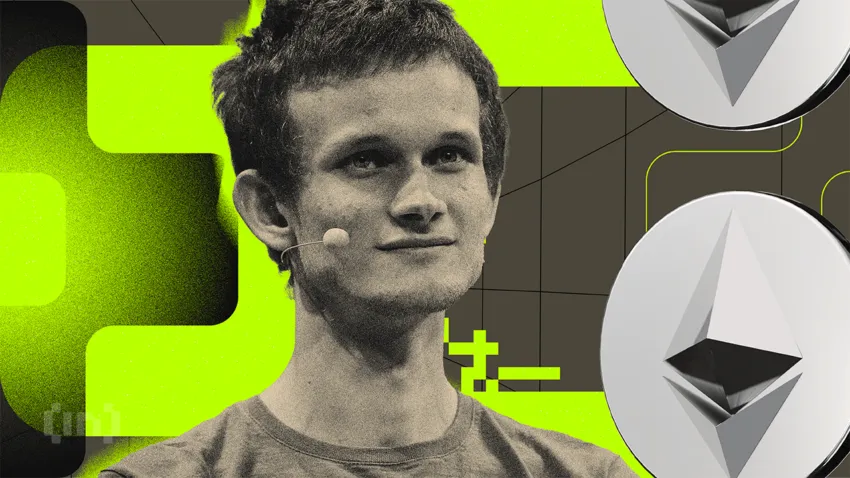Account Abstraction has been Vitalik Buterin’s long-time dream, but will it really be beneficial for users?

Account Abstraction has been Vitalik Buterin’s long-time dream, but will it really be beneficial for users?
For a long time, Vitalik Buterin, co-founder of Ethereum, has expressed his interest and enthusiasm for implementing Account Abstraction Ethereum on multiple occasions. Vitalik believes that this is a dream shared by him and many other Ethereum developers, and he believes it can greatly enhance Ethereum’s competitiveness as a Layer1 platform.
Vitalik even said that without the implementation, Ethereum might fail. He has proposed various detailed discussions on implementing Account Abstraction(referred to as smart contract wallets) in his blog, describing the possibility and potential benefits of its development implementation. Therefore, like previous proposals from Vitalik, Account Abstraction is also a hot topic in Ethereum and even throughout Web3.
In addition to the popularity, two major Layer 2 solution platforms StarkNet & zkSync have also announced that they will set up milestones for implementing Account Abstraction in their development roadmaps. This means that developers and end-users building applications on StarkNet or zkSync layer can directly develop and experience the functionality of Account Abstraction.
Unlike previous significant improvements such as Merge or EIP1447, Account Abstraction seem to potentially indicate their necessity and urgency for Ethereum. However, will it really solve wallet user experience problems for end-users? To answer this question we may need to start with understanding basic knowledge about Account Abstraction.
As we all know, unlike Bitcoin’s UTXO model, Ethereum uses an account model for accounting where users need to backup their private keys which represent ownership over an entire account structure with fixed transfer fees charged per transaction along with pre-set functionalities of the account.
The current proposal for Account Abstraction refers to modifying and expanding user wallet account functionalities through smart contract. The ultimate goal is to achieve more flexibility & innovation by reducing complexity, along with increasing convenience through creating more modularized wallet structures using Account Abstractions (i.e. smart contract wallets) within the ecosystem.
Simply put, these Account Abstraction can customize user on-chain interaction behavior, breaking the limitations of transfer fee models. Creating a more composable and modularized wallet account structure opens up possibilities for more on-chain functionalities and new use cases.
For example, batching multiple transactions together to reduce transaction GAS fees, making transactions more affordable. Allowing ERC20 tokens to be used as payment for GAS fees providing a more flexible payment method. Enabling programmable backup & recovery mechanisms (social recovery), enhancing security & control. Making it possible to implement on-chain programmable restrictions such as single transfer amount limits.
Like all new technologies, Account Abstraction bring not only benefits but also downsides. Due to smart contract interactions involved in backing up and restoring accounts, there will be additional GAS fees incurred which increase costs. Some smart contracts may need redeployment due to updates in network infrastructure. Security still depends on private keys and does not inherently increase user account security.
It is worth noting that Account Abstraction is still a concept under development and proposal refinement process. Moreover, developing the implementation of Account Abstraction and its large-scale adoption is an incremental process where developers/users within the Ethereum ecosystem need time to adapt gradually.
Even if Account Abstraction were immediately implemented ideally as described above, it would not solve all wallet-side user experience problems fundamentally. Essentially Account Abstractionis an innovation in chain-based wallet functionality infrastructure while MPC technology currently being implemented by Cregis represents innovation in off-chain wallet technology.
In fact, on the Cregis platform, each transaction is signed offline by multiple devices using MPC technology which enhances security by distributing signature processes among several devices without relying solely upon one device’s private key signature.
Although MPC cannot provide some special on-chain transaction functions --- reducing GAS fees, batch processing, and programmability --- the benefit of using MPC is that even if an MPC shard from one device gets lost, then administrator devices can recover all permissions while maintaining maximum control over wallets. This feature maximizes account and private key security.
This is different from the social recovery account security strategy where in Account Abstraction technical solution, users still need to worry about securely storing and backing up their private keys. Users’ trade-offs for security needs will also allow both AA and MPC technology products represented by Cregis to have their own markets.
Overall, in a non-zero-sum game market, MPC and Account Abstraction are far from technological competition. Both of them can complement each other strongly while contributing to enhancing Ethereum network infrastructure’s boost, flexibility, and functionality. As network effects further increase, the bottleneck of Ethereum user numbers will also be broken!